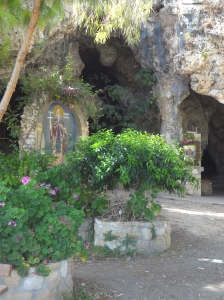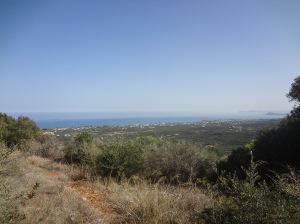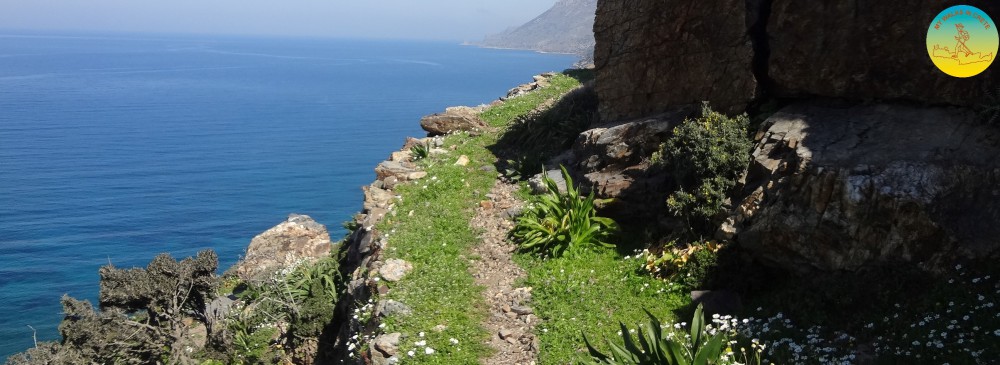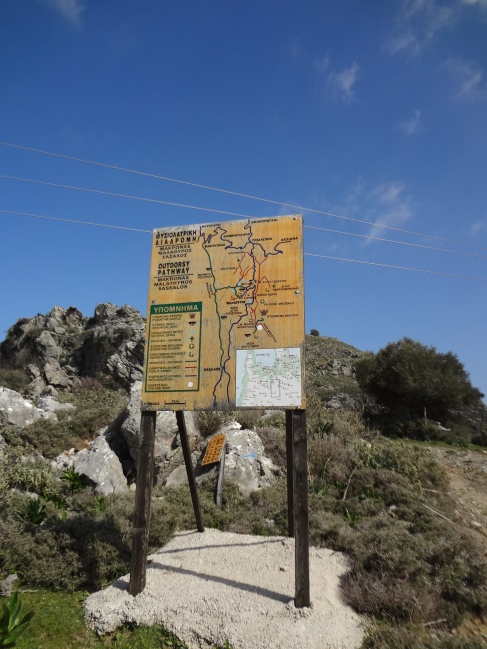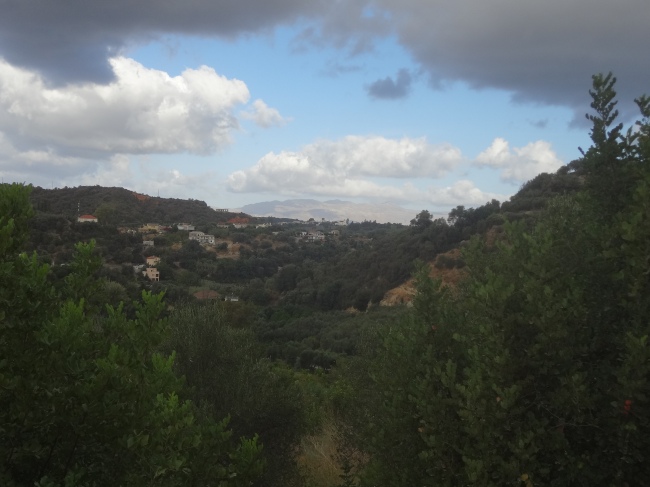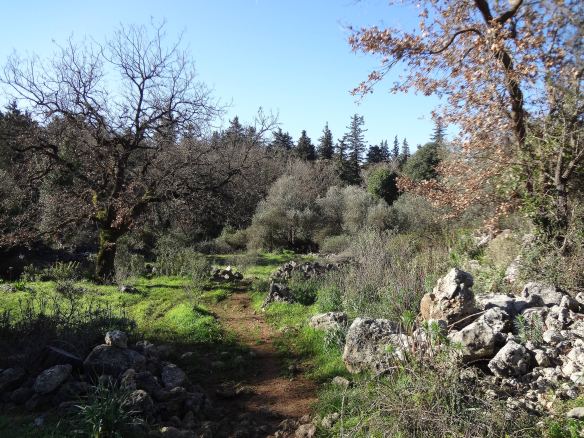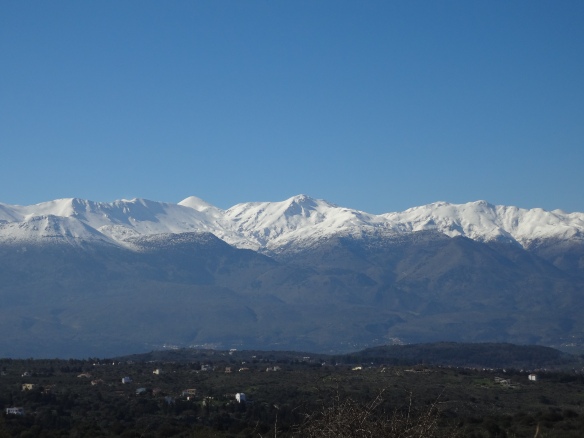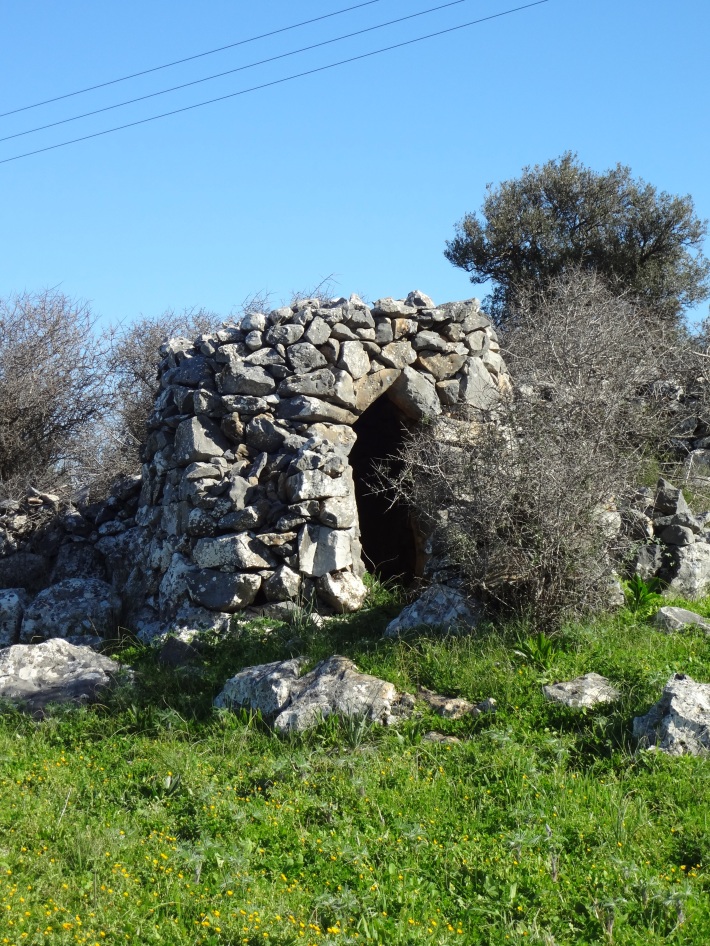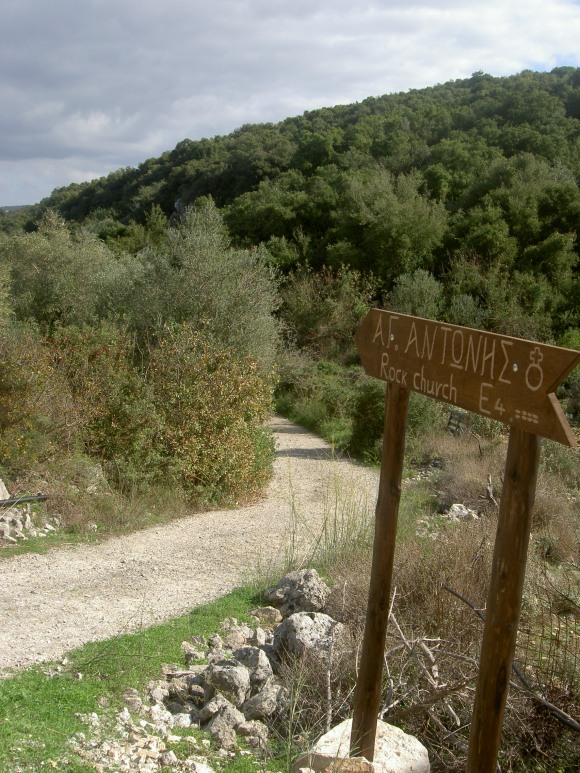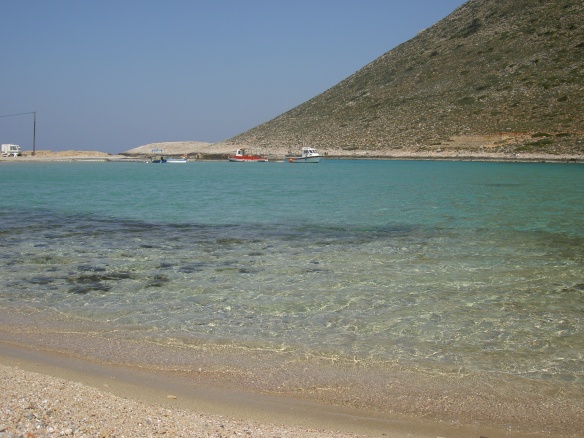Exploring Crete on foot is a great way to discover it. There are plenty of good books with excellent walk descriptions. For me however, still the adventurous way is to take a map, find a place and see if there are any paths in that specific area. If I do not see them on a map, I simply ask the people in the kafeneion. Usually the elderly people still know where the “monopatia” (trails) can be found. If they know a trail, they will explain it to me in several ways, but always tell my that it is easier by car.
This time I started my walk at the church of St. John the Hermit, located in a cave near the village of Marathokefála. I take my time to enjoy the marvelous view. It is a clear day and I can even see Chaniá. A nice path leads me initially downhill. Suddenly the path becomes invisible and it involves some climbing to get back on a proper trail. Something I like, one never knows if a trails leads to somewhere and I love finding new paths.
My plan is to walk to the village of Nóxia. In the prefecture of Chaniá, Nóxia is the only village where traditional potters are still at work. It is well worth a visit.
It only takes an hour to get to Nóxia and I take my time to visit the pottery. Then I find my way to the kafeneion for a Greek coffee. I can’t leave without drinking a raki that a farmer offers me.
Since I like to make detours, I decide to take a different route on my way back. A short walk brings me to the hamlet of Gerakanía. Surprisingly no kafeneion here. As I leave the village walking uphill , I can even see Rócca , which are the ruins of a Byzantine fortress. They are on a steep hill, called Troúli, next to the village of Rócca.
An unpaved road passing through olive groves, offers fantastic views at the lush green landscape and the sea. Before I realize, I am back at the parking place where I left my car.
I feel happy and full of energy after this pleasant 3 hours walk.